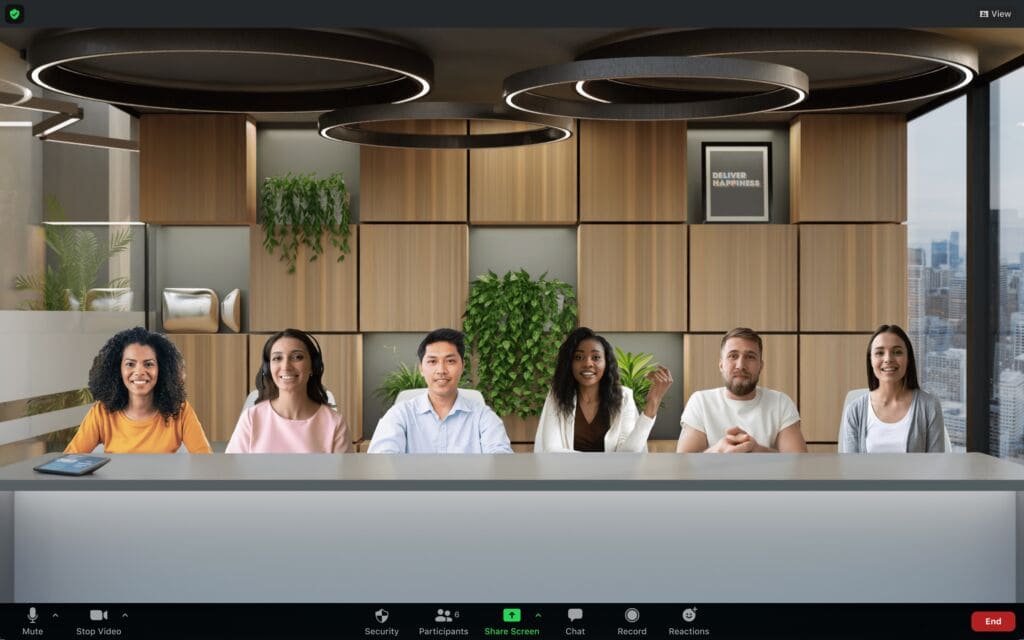It’s hard to imagine that only two years ago, working from home was still considered a luxury. Two years after the pandemic, working from home or some form of hybrid work is not only expected by most employees, it’s becoming a necessity.
While many organisations are resistant to hiring a fully remote team, a PwC survey of 4,000 business and HR leaders in 26 countries shows that 57% of respondents found that employee productivity increased with a remote or hybrid setup.
In Japan, a February 2020 internal survey at Fujitsu revealed that 74% of employees considered the office the best place to work. By May of that year, only 15% of Fujitsu employees considered the office to be the best place to work. In a separate Global Workplace Analytics survey, 68% of survey respondents felt that they worked better from home.
As the world opens up and governments lift capacity limits in offices, we’d like to recommend some pointers for flexible working arrangements that may increase employee satisfaction while increasing employee productivity.
Increasing employee Productivity through Workplace Flexibility
1. Don’t rush to go back into the office

Is it a matter of control? Do you need to see your staff working at all times? If that’s the case, the issue might come down to trust, or a lack of inherent controls in workflows instead of a legitimate need for an office space.
In an article on his company’s website, Michael C. Bush, the CEO of Great Place to Work, advises company leaders to ask their employees when they think it’s safe to come back to work (more on engaging employees in this process in a moment).
In the same article he says, “Going forward, place shouldn’t matter, but flexibility should.” He continued, “I don’t think of the hybrid future as one of physical place. I think of it as really caring for people and giving them the flexibility that’s needed to have a high sense of well-being.”
Before taking steps to reopen the office, it’s best that leaders take time for introspection and analysis. Once you’re clear about why you want employees to return, let’s look at how.
2. Focus on individual concerns

According to Lynda Gratton of the Future of Work Consortium, in order for managers to implement flexible working arrangements successfully, four perspectives must be kept in mind: (1) jobs and tasks, (2) employee preference, (3) projects and workflows, and (4) inclusion and fairness.
As no business is the same, these perspectives will give you a framework for planning hybrid arrangements.
The crucial drivers of productivity according to Lynda are focus, coordination, energy, and cooperation. For example, coders or programmers might need more focus and energy, therefore a work-from-home arrangement will benefit as there’s no distractions from the office.
Conversely, a marketing manager or creative lead will require higher coordination and cooperation, in which case, an arrangement where teams can collaborate regularly is required.
Knowing this, use the first perspective to understand each department’s jobs and tasks, as well as their key productivity drivers, to match working arrangements to them.
Understanding employee preference here is key, as understanding which situations provide an environment for productivity is different for individual employees. To understand each employees’ preferences, you may consider running persona tests or individual surveys, to better understand productivity drivers on an individual and departmental level.
Next, managers need to understand projects and workflows, or rather, how work gets done. This includes abandoning traditional routines of the office and creating new workflows that can only work in an online environment, eg. Can this meeting be an email? Can this process be automated?
The final point from Lynda touches on inclusion and fairness. It may be tempting to delegate hybrid working arrangements to managers of departments and let the chips fall where they may, but perceived unfairness in an organisation will lead to decrease in productivity, burnout, reduced collaboration, and decreased retention.
Depending on the size of the company, managers can include employees in the process of planning the new ways of working for the company. Employees whose voices are heard will feel included in the process and in turn, will be more willing to adopt new working practices.
3. Treat remote and in-person work the same

A Wall Street Journal report revealed data that showed in-person workers were higher rated than their remote counterparts even if their performance figures showed otherwise.
This bias discourages hybrid working and may force employees to come into the office even if they don’t want to, leading to dissatisfaction at work, decreased productivity, and ultimately, decreased retention.
To overcome this, managers need to be trained to measure output rather than individual actions. The time-honoured S.M.A.R.T. employee performance tool is a good framework for any manager to set observable goals:
S.M.A.R.T is an acronym for specific, measurable, assignable, realistic, time-related. Let’s explore each one individually:
Specific – Your goals are focused and identify a tangible outcome
Measurable – There should be a clear definition of success or progress
Assignable – Specify who should achieve what goal
Realistic – The goal should be challenging, but also realistically achievable
Time-related – Specify when the result or results should be achieved
With these criteria, even fully-remote teams can be managed fairly and unconscious biases can be avoided or eliminated completely.
4. Find Effective Ways To Communicate



Dropbox famously allowed all of its employees to work from home permanently and even released a Virtual First Toolkit, outlining principles for virtual-first work.
One part of their toolkit contained advice for communicating effectively in a virtual-first environment. While we won’t go over their advice on how to write emails or memos, their advice on when to meet—and when not to meet—was pertinent.
“Hopping on a quick call” may sound benign, but can turn into productivity wasters when compounded. In this case, they recommend that meetings should be scheduled in advance and only in these scenarios:
Hard-to-reverse decisions: such as choosing X vs Y, product direction, or hiring new staff
Complex problems that need discussion: defining corporate narrative, developing a 6-month roadmap, or revising the scope of a running project
Plan and reflect: for project kick offs or project debriefs
Emotionally sensitive topics: like giving difficult feedback or discussing a personal issue
Supporting and unblocking your reports: regular one-on-ones with your direct reports for career development or connecting their work to company objectives
Thankfully, they also recommend you do not schedule meetings in these three situations: status updates, FYIs, or meetings about scheduling meetings.
The place where we work and how we work has undergone a paradigm shift and those who do not adapt will inevitably be left behind.
In summary, understand why or even if you need to go back to the office. Then, understand how your organisation works, and how the people within them work to maximise productivity. Treat everyone equitably once work arrangements have been agreed on, and find ways to best communicate within your new norm.
Finally, check to see if your new SOPs are aligned with your existing company culture and if your company’s new direction is future-proof and not merely a temporary fad to appease staff who want work flexibility.

create a flexible work environment and take your employee productivity further
Find out how you can effectively conduct team building activities with our articles:
